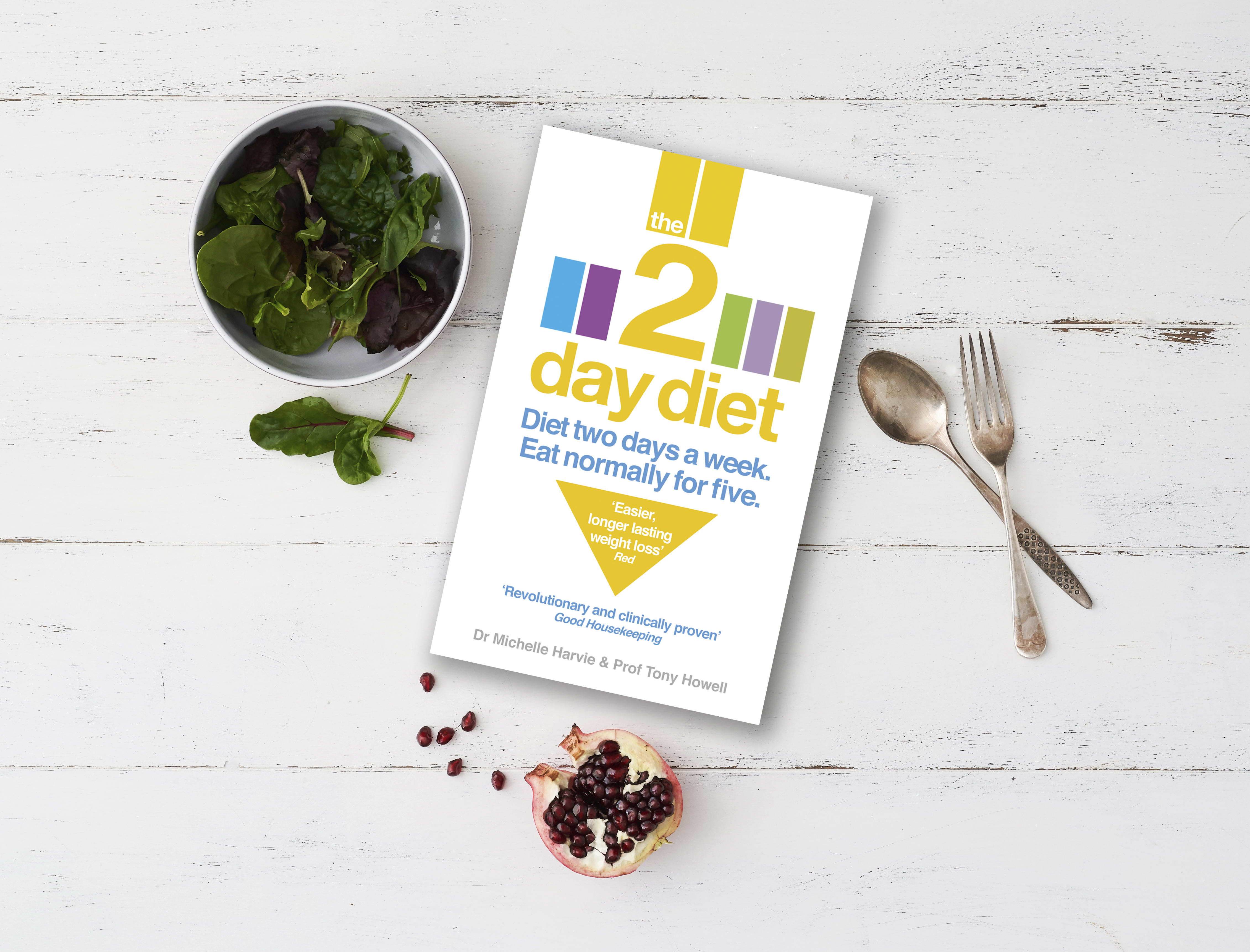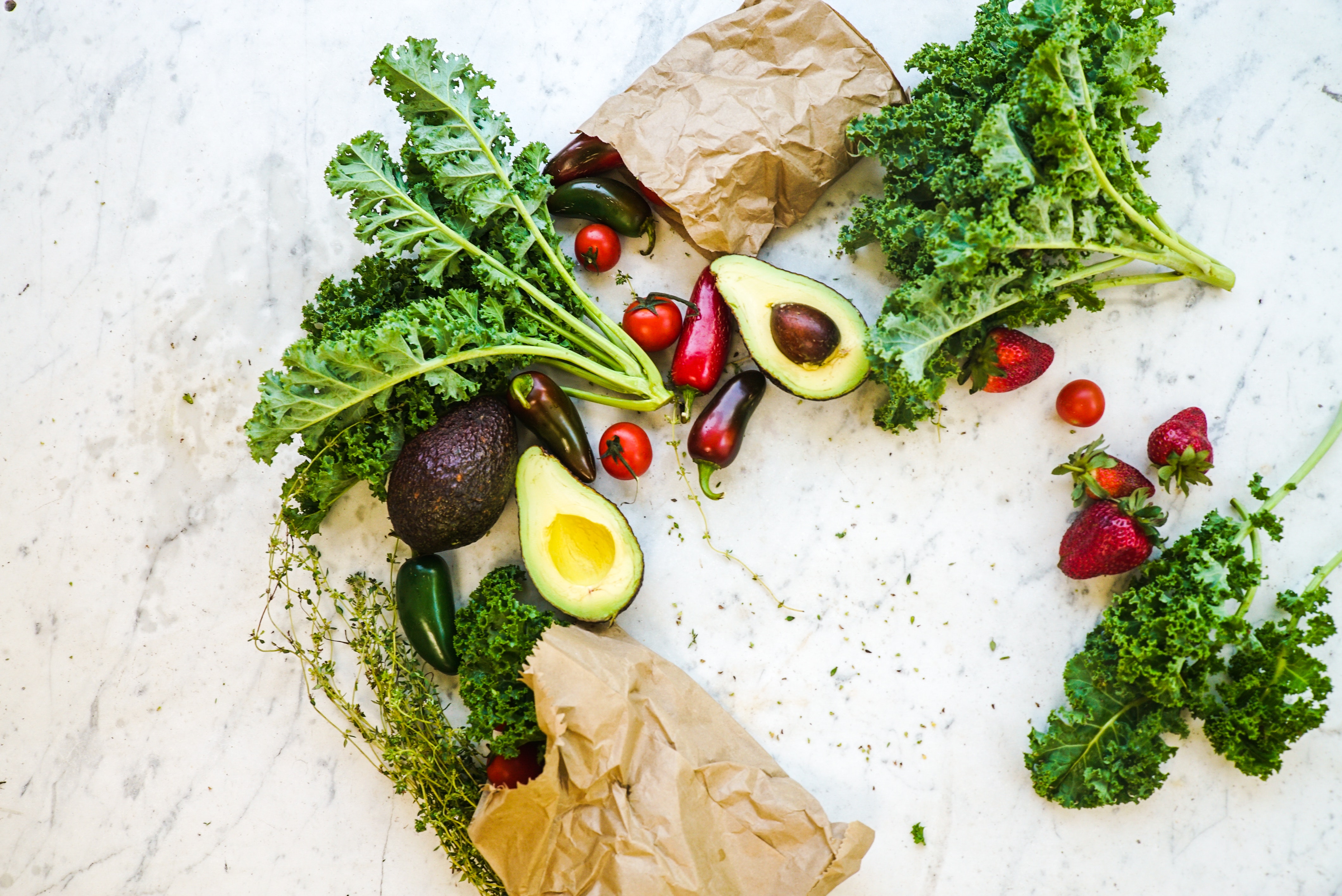- Home |
- Search Results |
- Why The 2-Day Diet works
Why The 2-Day Diet works
If you are someone who has tried and failed to lose weight, The 2-Day Diet may just be the right thing for you. This is the original, clinically-proven 5:2 diet, developed by Dr Michelle Harvie and Prof Tony Howell, to help you get down to your ideal weight.

What is The 2-Day Diet?
The 2-Day Diet is the original 5:2 diet. The rules are simple – two days on, five days off. Just cut your carbs, eat plenty of healthy proteins, nuts, fat and vegetables for two days – and eat healthily for the rest of the week. You don’t have to fast – in fact the diet is designed to help you stay full, and this makes it easier to stick with because you never feel hungry. It’s nutritionally balanced, there’s no calorie counting and there’s loads of choice – so you never get bored. And, rather than forcing you to diet, The 2-Day Diet retrains your eating habits, so the weight stays off.
The 2-Day Diet is low enough in calories to enable you to lose weight without leaving you feeling hungry, it is nutritionally balanced so you get your full vitamin, mineral and protein intake, and it easily fits into a busy lifestyle. It’s effective too – in clinical trials, dieters were more likely to stick to The 2-Day Diet than to other diets, and lost twice as much fat as a calorie controlled diet. On top of the weight you’ll lose – and will keep off – The 2-Day Diet lowers blood pressure, improves well-being, mood and energy, and reduces insulin and levels of other hormones and inflammation in the body known to cause cancer, heart disease and diabetes.
The diet was developed by award winning research dietician Dr Michelle Harvie and Professor of Oncology Tony Howell. The original approach – the Genesis milk diet – was very successful and showed that dieting for just two days a week worked. But, this diet only allowed a limited range of foods, and the concern was that people would struggle to stick with it in the long term. So over the next seven years, working on the same principles, they developed The 2-Day Diet.
The final version of this ground-breaking diet involves two consecutive days of low-carb, high-protein eating, and healthy Mediterranean style eating the rest of the week. It has been extensively tested on a large number of dieters. The results of these tests (which are covered in their book) show that intermittent dieting is more effective and easier to follow than a standard continuous diet – a 65% success rate versus 40% - and that it retrains your appetite on the unrestricted days to eat fewer calories. As mentioned before, on The 2-Day Diet you don’t count your calories, but overall you will be eating around half of your normal intake. The 2-Day Diet is designed to maximise fat loss, minimise muscle loss, and keep you feeling full.

What does a typical day look like?
The beauty of The 2-Day is its simplicity and the fact it only has to be done two days of the week, ideally consecutively. You don’t need to count calories or go hungry. All you need to do is stick to the recommended foods listed, making sure that you include the minimum recommended servings, but that you don’t exceed the maximum. The book contains a guide to the maximum number of servings of each type of food, to help reassure you that you aren’t eating too much. It’s important that you have enough protein and electrolytes on the restricted days, and for this reason we recommend that you have at least the minimum recommended amounts of protein foods, and that you try to have dairy, fruit and vegetables. Beyond this, only eat as much as you need and listen to your body.
On each of your two restricted days of The 2-Day Diet you can consume:
- Protein foods (i.e. chicken, fish, eggs, lean meat): a maximum of 12 servings for women and 14 for men.
- Fats (i.e. rapeseed, olive oil, nuts or avocado): a maximum of 5 servings for women and 6 servings for men.
- Dairy: 3 servings.
- Fruit: 1 serving.
- Vegetables: 5 servings.
- At least 2 litres (4 pints) of water, tea, coffee or other sugar-free or low-calorie drinks.
If you wish, you can also include:
- Sugar-free chewing gum or liquorice root (available from health food shops).
- Up to 10 sugar-free mints.
The book defines what constitutes a serving, and gives you a detailed list of all the foods you may consume and in what quantities.
Your diet for the remaining days (the five unrestricted days) should be based on eating a healthy Mediterranean-style diet. This includes food that is as whole and unprocessed as possible with lots of fruit and vegetables, wholegrains, beans, pulses, nuts and olive oil as well as fish, poultry, low-fat dairy foods, and it can include amounts of lean, red meat – but avoid lots of pasta, pizza and red wine.
The Mediterranean diet is packed full of disease-fighting antioxidants, vitamins and flavonoids, and the benefits of eating this way are almost too numerous to list. There’s convincing evidence that it not only lowers the risk of heart disease and diabetes, but it may also protect against some cancers and Alzheimer’s disease. Your eating plan for these five unrestricted days contains high-protein, high-fibre foods to help you feel full and reduce your chances of overeating.
Protein foods include:
- White or oily fish and seafood.
- Chicken, turkey or duck (cooked without skin).
- Lean cuts of red meat – for example beef, pork, lamb or offal, lean game, venison, rabbit or pheasant.
- Pulses, beans, chickpeas and lentils – use these for bulking up dishes.
Limit to once during the five unrestricted days:
- Fatty cuts of red meat, poultry and game (these are high in saturated fat).
- High-fat processed meat and meat products (for example sausage and corned beef – these are high in saturated fat and salt).
- Charred and well-done meat and fish (these are limited due to some concerns about cancer risk associated with consuming charred foods).
- Battered/breaded fish (these are higher in calories and much lower in protein than uncoated fish).
- Low-fat processed meats, bacon, ham and salty fish such as kippers, smoked salmon, smoked mackerel and smoked white fish to limit your overall salt intake for the week.
Why is it so effective?
One of the things that makes The 2-Day Diet so effective, according to the people that follow it, is the structure the diet gives to their eating. There aren’t many rules – beyond carb restrictions on ‘diet days’ and Mediterranean style eating for the remainder – but just being able to follow a simple few guidelines, and knowing that you’re benefiting from eating healthily, actually makes losing weight much easier.
Of course it would be amazing if you could just fast and feast – slash your calories a few days a week and then eat as much as you like of whatever you’re craving the rest of the time whilst still staying healthy and losing weight. Sadly, and as any dietician will tell you, quick fixes don’t exist when it comes to weight loss. Even if you cut your calories to the bare minimum when you’re dieting, but overeat the rest of the time, you won’t lose the weight you’re aiming for. And, research shows that you’ll lose some of the important health benefits that come with calorie restriction – especially if you’re not eating healthily on your ‘free’ days. While spells of lower calorie intake may help get cells into better shape, exposing them to excess calories and an unhealthy diet on your ‘off’ days poses a real challenge for your health.
This is why The 2-Day Diet works – it is structured to make sure you lose weight, but nutritionally balanced so that you don’t have to top up with supplements. All the evidence shows that high-protein coupled with low-fat, and fruit and vegetables is the way to long term weight loss and that Mediterranean eating can help fend off heart disease, cancer and a host of other illnesses. The 2-Day Diet ticks all the boxes, combining healthy eating with two days of restriction to boost your health and help you get to your ideal weight.